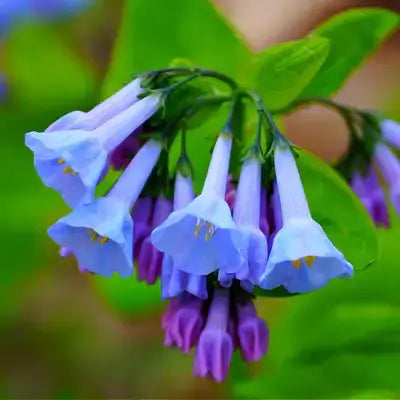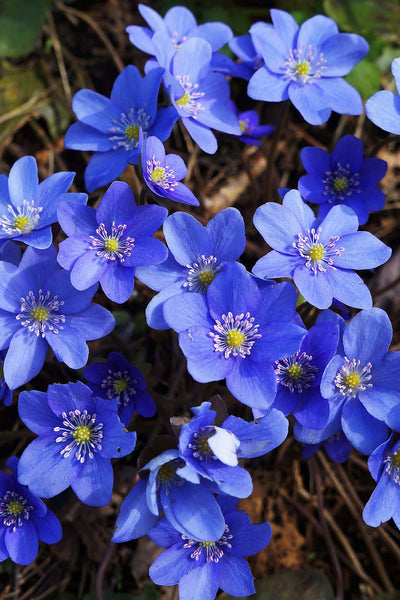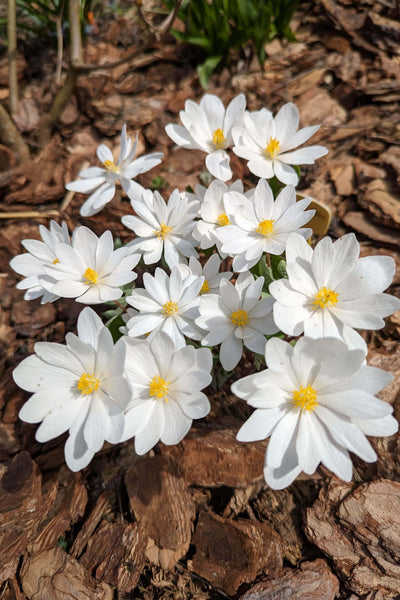Virginia bluebell is a natural wildflower found in Virginia's lush forests and river flood areas. It can be found in eastern North America, from New York to Minnesota and Canada. The plant has lungwort oyster leaf, Virginia cowslip, and eastern bells.
They can reach one to two feet and have tiny purplish-pink buds. These buds bloom to become sky-blue flowers with a sweet fragrance. The sky-blue color is the most prevalent, although they are available in various other colors, including pale lilac, white, and pink. These other colors are uncommon but frequent enough that you can typically locate some of them in large plant areas.
The flowers are about an inch long, blue, and trumpet-shaped, with five distinctive petals. Some varieties have pink or white flowers. The pendulous, bell-shaped flowers are made of five petals merged into a tube. This tube includes five white stamens with light brown anthers and a long, thin white center pistil.
Virginia bluebells bloom during spring, usually between mid-April and mid-May. They cannot self-fertilize and therefore rely on pollinators for reproduction. Because of its trumpet flower shape, butterflies are the most common pollinators of them. Pollination is more challenging for bumblebees since they must hover next to the flower. Fertilized bluebells produce four seeds on average.
Virginia Bluebells Make Great Border Plants
You can plant Virginia Bluebell in borders or other beds in your garden, but you must prune them regularly to avoid fading leaves and blank gaps. If they are planted together with other perennials like hosta and astilbe, these plants fill the blank spaces with time.
In proper environments, these plants are highly competent in forming colonies independently. When strolling in the woods, you may find a length of a bluebell-lined trail which may be surprising. Bluebells have an underground rhizome system as well. This allows them to store energy so that they can grow and spread.
A fun fact about this plant is that its name Mertensia virginica is the scientific name in honor of a German botanist named Franz Carl Mertens. Mertensia was later given to a jellyfish family named after Mertens' son, K. H. Mertens. The jellyfish, like the flowers, have distinctive, beautiful colors.
The Virginia Bluebell Signifies Everlasting Love



